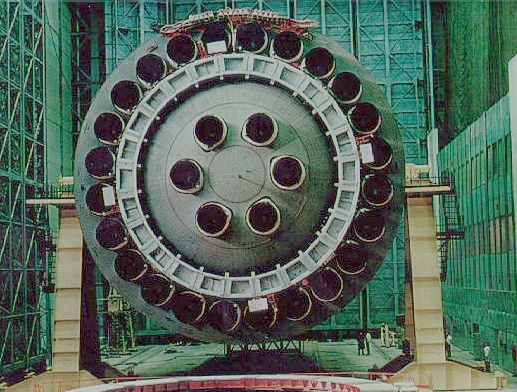Bottom view of an N-1 first stage. A little lens trickery was perhaps used here to make the technicians look so small in comparison to it, as was often done by the Soviets for propaganda purposes. The layout of the 30 NK-33 engines is clearly visible.

Choosing to use so many smaller engines vs. a few large engines, as was the case for the American Saturn V which utilized 5 F-1 engines, proved to be the downfall of the entire Soviet lunar program. A single-engine failure was supposed to have been compensated for by a rudimentary computer system called KORD. The KORD system would shut down the bad engine and, to keep the thrust symmetrical and the vehicle balanced, also shut down the engine directly opposite to it. However, the KORD system was never able to detect engine failure and take the appropriate steps to prevent catastrophic damage to the vehicle soon enough. The result was 4 failed launches in 4 attempts – none of them have ever even fired their second or third stages.
